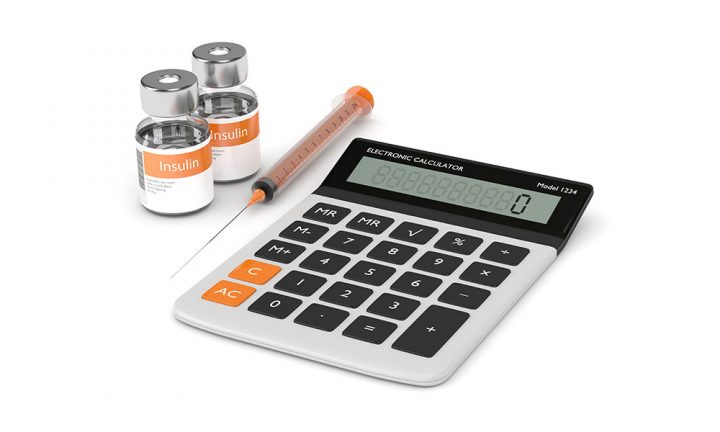I created this insulin dosage calculator to help me figure out how much insulin I need to take for each meal to bring my blood glucose to the level I want.
However, before this calculator can be used, I had to figure out how to measure my insulin sensitivity – how much each unit of my short-acting insulin (glulisine) will lower my blood glucose.
There are some methods to estimate this (go google), and your diabetic nurse would probably be able to help you calculate this based on your current insulin dosage. I started off with an estimate provided by my diabetic nurse, and did some trial-and-error and fine-tuning along the way.
I’ll describe how to use this calculator.
Step 1 – Meal Intake
| Current blood glucose level | mmol/L |
| Carbs to consume for this meal | g |
| Target blood glucose level | mmol/L |
This is the main section where the import data for every meal is entered. You should specify all the 3 values based on your requirements.
- Current blood glucose level – perform a blood glucose test to know how high or low your current blood glucose is. I measure with the flash glucose monitoring system or a blood glucose test strip. I’m using the FreeStyle Libre that supports both methods.
- Carbs to consume for this meal – determine the carbohydrates that you will be consuming, or have consumed for the meal. Carbohydrates is the main food component raising your blood glucose. I use the nBuddy app to estimate.
- Target blood glucose level – usually you would want to target the normal healthy human range, between 4-6 mmol/L. To be on the safe side, I target 6.0. I would rather have hyperglycaemia than hypoglycaemia.
Step 2 – Dosage Estimates
| Post-meal glucose without insulin | mmol/L |
| Reduction required | mmol/L |
| Insulin required | units |
| Carbs required (Hypo!) | g |
This is the estimate (aka answer) for your meal.
- Post-meal glucose without insulin – this is how high your blood glucose will be if you did not take any insulin for the amount of carbohydrates you have taken.
- Reduction required – this is just a simple subtraction to know how much you need to lower your blood glucose.
- Insulin required – based on your insulin sensitivity, this is the amount of insulin you need to inject.
- Carbs required – in case you are in hypo, this indicates the amount of carbohydrates you need to take to reach your target blood glucose level.
Settings – Patient Sensitivity
| Change in blood glucose per unit insulin | mmol/L |
| Carbs to consume per unit insulin | g |
| Carbs to change 1 blood glucose unit | g |
The patient sensitivity varies from patient to patient. There are many ways to calculate your own sensitivity, which you can google for.
- Change in blood glucose per unit insulin – this is how much your blood glucose will decrease when you inject 1 unit of your short-acting insulin. This will depend on which short-acting insulin you are taking. This sensitivity will also change depending on your metabolism. For example, if you just had a HIIT session, this is going to be higher than normal as your body is hungry for carbohydrates, and you will effectively not require as much insulin to lower your blood glucose.
- Carbs to change 1 blood glucose unit – this is the amount of carbohydrates that will raise your blood glucose by 1 mmol/L.
- Carbs to consume per unit insulin – this is the amount of carbohydrates to match the insulin dose. Effectively the product of the 2 previous attribute.
You talk too much. I just want the Insulin Dosage Calculator!
If you find my explanation too distracting, Here's the plain insulin dosage calculator. Please feel free to contact me below if you have any comments.
